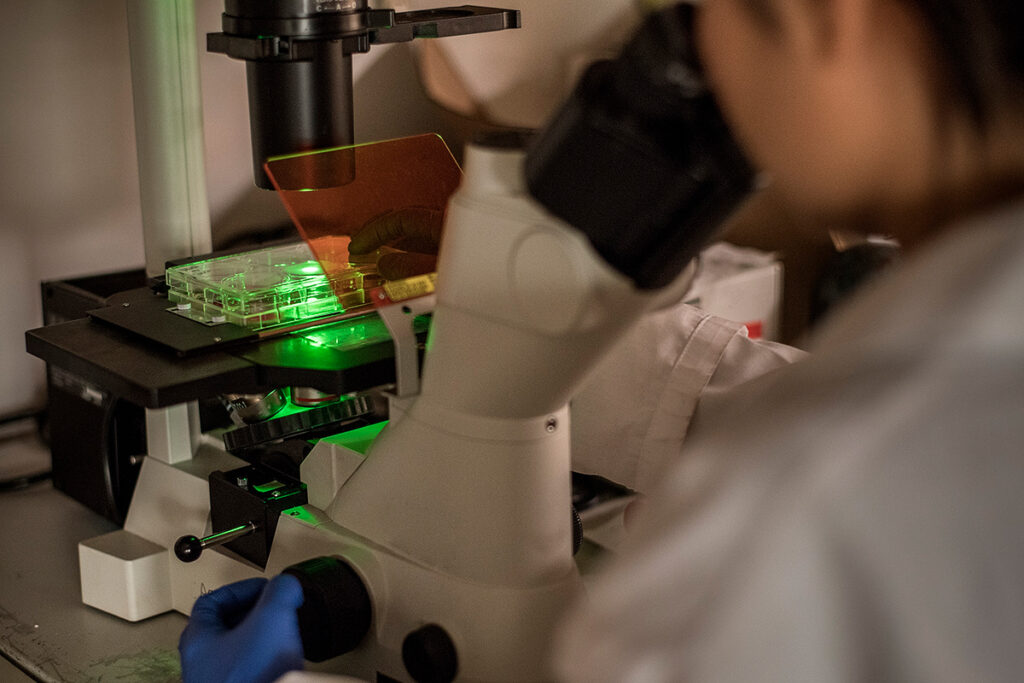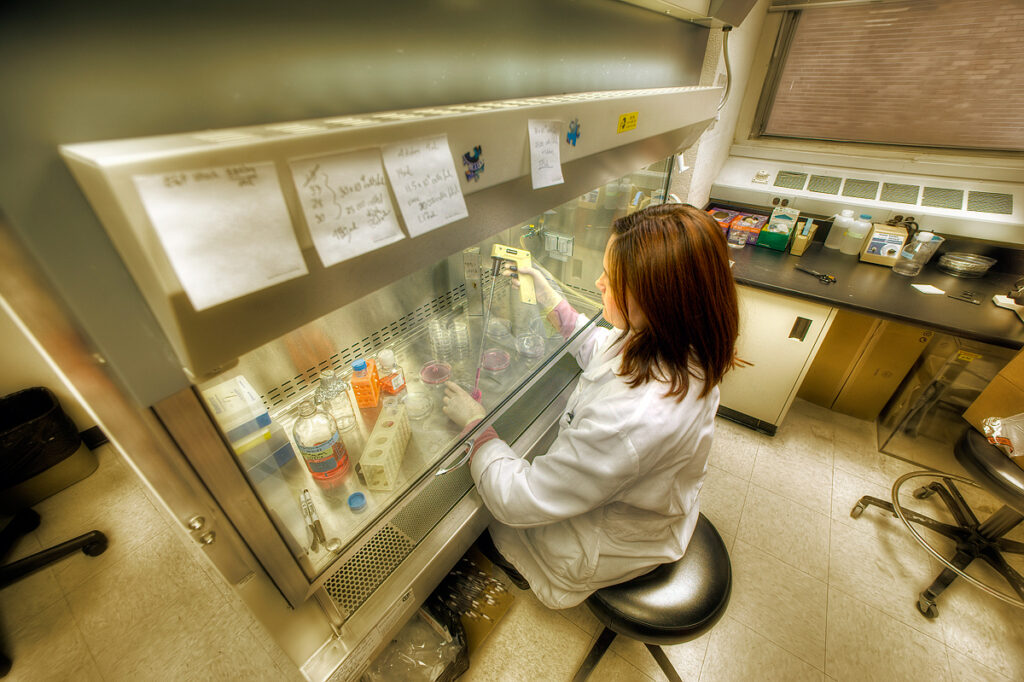The first sample of a new strain of coronavirus was discovered on September 20 in Kent, UK’s South-East.
The decoded genome of the new strain caused alarm among scientists. In most cases, mutations in the coronavirus genome accumulate at a constant rate: 1-2 per month. The new strain of SARS-CoV-2 contained 17 changes in the genome at once. Such a large number of simultaneous mutations have not yet been found anywhere in the world during the entire time of the pandemic. In 14 cases, amino acids were replaced, and in three cases, the nucleotide sequence fragments were missing.
The genetic characteristics of a new strain of coronavirus
A vast number of genetic changes (8 at once), affected the spiny protein that the coronavirus uses to enter the cell. Another 4 mutations were found in the orf1ab gene, which encodes a 1AB polyprotein involved in viral RNA Assembly. There are three mutations in the ORF8 gene, which is responsible for the formation of a shell of new viral particles. One mutation was found in the gene encoding the nucleocapsid envelope of the virus.
Studying each mutation is a complicated and time-consuming process. Of the 17 mutations found, scientists have previously encountered three that are of particular concern. All of these mutations are associated with the spiked coronavirus protein:
- The N501Y mutation increases the likelihood of coronavirus entering a healthy cell in the body. This mutation changes the shape of the coronavirus spike protein so that its binding strength to the ACE2 cell receptor increases: the viral particle holds on more tightly to the cell it is trying to penetrate. Laboratory studies have shown that N501Y is associated with increased infectivity and virulence in mice.
- The 69-70del mutation helps the viral particle evade the immune system of some immunocompromised patients. Also, because of this change in the genome, some PCR tests do not recognize the coronavirus. This mutation is due to the absence of two amino acids in the spike protein of the coronavirus. A series of PCR tests identified this missing fragment. However, most PCR tests can detect coronavirus by several signs, and the absence of one of them will not lead to a false-negative result.
- The P681H mutation function is not yet exact, but its location in the coronavirus’s genomic sequence is concerned. This mutation is located next to the nucleotides that encode the virus’s ability to enter the respiratory epithelium cells.
How dangerous is a new strain?
On December 21, the world health organization (WHO) issued a special message dedicated to the new strain. So far, little is known about the new strain:
- the new strain is potentially more easily transmitted from person to person;
- research is underway on possible changes in the severity of the disease;
- antibody formation reactions are being studied;
- the effectiveness of existing vaccines is being established;
- it is possible to reduce the effectiveness of PCR tests.
The American Center for disease control and prevention on December 22, 2020, also does not report specific data:
- the new strain of SARS-CoV-2 may be transmitted faster, but this does not mean that it is more contagious;
- it is not known whether the new strain causes more severe forms of COVID-19.
Possible reasons for the emergence of a new strain
The exact causes of the appearance, most likely, will not be able to be established. However, there are earlier studies of COVID-19 patients with immunodeficiency and immunosuppression. In such patients, the disease becomes chronic and lasts 2 to 4 months. With a high viral load, they have prescribed plasma transfusions to recovering people. Sometimes this procedure is performed several times. The virus particles that survive the first procedure become resistant to antibodies. Decoding the viral genome obtained from COVID-19 patients with suppressed immunity reveals a vast number of nucleotide changes and deletion mutations.
Based on this data, scientists hypothesize the emergence of a new strain of coronavirus in the UK. The researchers believe that the new strain arose due to long-term evolutionary dynamics in a single patient with suppressed immunity and chronic disease.
Scientists emphasize that such cases are rare, and transmission from such a patient is even rarer. However, this option cannot be ruled out due to many new cases worldwide.
To-do list
WHO recommends that all countries strengthen compliance with preventive measures among the population and health workers. A primary control and preventive measures:
- exclude close contacts with people who have symptoms of coronavirus infection;
- wash your hands more often;
- maintain a social distance;
- wearing masks in public places;
- strengthen preventive measures in medical institutions.
For a complete list of measures to protect against coronavirus infection, see the “list of measures to reduce the risk of COVID-19 infection” page.
New strain spreading timeline on December 21, 2020
The new strain was discovered on September 20 in the County of Kent in the UK’s South-East.
The next day, the same strain was identified in London due to decoding a coronavirus’s genome found in a sick person.
By mid-November, 26% of cases of COVID-19 detected in the UK were from a new strain. In the second week of December, it became dominant in London: more than 60% of cases.
On December 19, the UK government introduced maximum restrictive measures in areas infected with the new SARS-CoV-2 strain. Businesses that are not vital have been shut down. Restrictions on the movement of people and gatherings were tightened. The existing million-dollar fines and the threat of a criminal record for violations of preventive measures were not enough.
As of December 15, the phylogenetic cluster of the new strain had 1,623 genomes:
- 519 in London;
- 555 in Kent County;
- 545 in other regions of the UK;
- 4 in other countries.
On December 19, the countries of the European Union began to close transport links with the UK. On December 21, more than 30 countries of the world stopped air, rail, and road communication with the UK.
According to the world health organization (WHO), as of December 21, a new strain of coronavirus was detected in 5 more countries:
- Denmark;
- Holland;
- Italy;
- Iceland;
- Australia.
The strain evolution rate
The coronavirus’s new strain was designated VUI 202012/01 (Variant Under Investigation, 2020, month 12, variant 01). Scientists call this genetic line B.1.1.7.
Strain B.1.1.7 has a more significant number of genetic changes than other SARS-CoV-2 lines.
The figure shows the rate of genetic differences from the virus’s original genome that appeared in Wuhan (China) in December 2019. On the abscissa axis – the number of nucleotide changes, and on the ordinate axis is the date of detection of the modified genome.
The rate of molecular evolution of line B.1.1.7 is similar to the evolution rate of other related lines. However, strain B.1.1.7 deviates more strongly from the phylogenetic root. A possible cause is adaptive molecular evolution.
Conclusions
The best thing to do in the current situation of uncertainty is to strengthen preventive and protective measures, if possible – to get vaccinated. It is vital to strengthen the protection of people with reduced immunity.
In the current situation, it is also important not to panic. Panic and stress worsen the protective properties of the immune system. Existing scientific data are not yet sufficient to assess the impact of B.1.1.7 on the development of the pandemic.
The good news is that the new strain rate does not differ from other coronavirus strains.
Sources:
- Preliminary genomic characterisation of an emergent SARS-CoV-2 lineage in the UK defined by a novel set of spike mutations
- Mutant coronavirus in the United Kingdom sets off alarms, but its importance remains unclear
- SARS-CoV-2 Variant – United Kingdom of Great Britain and Northern Ireland



